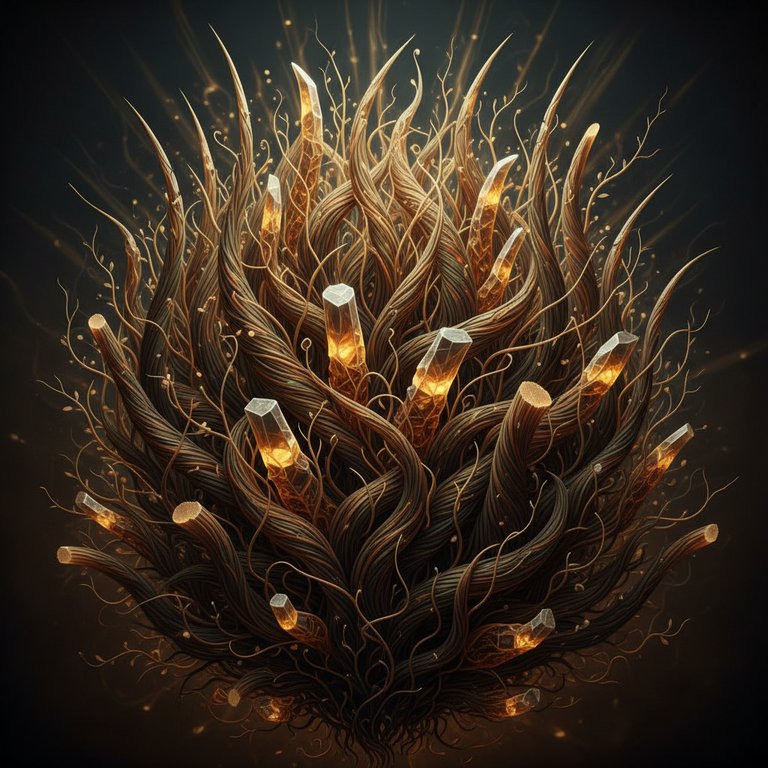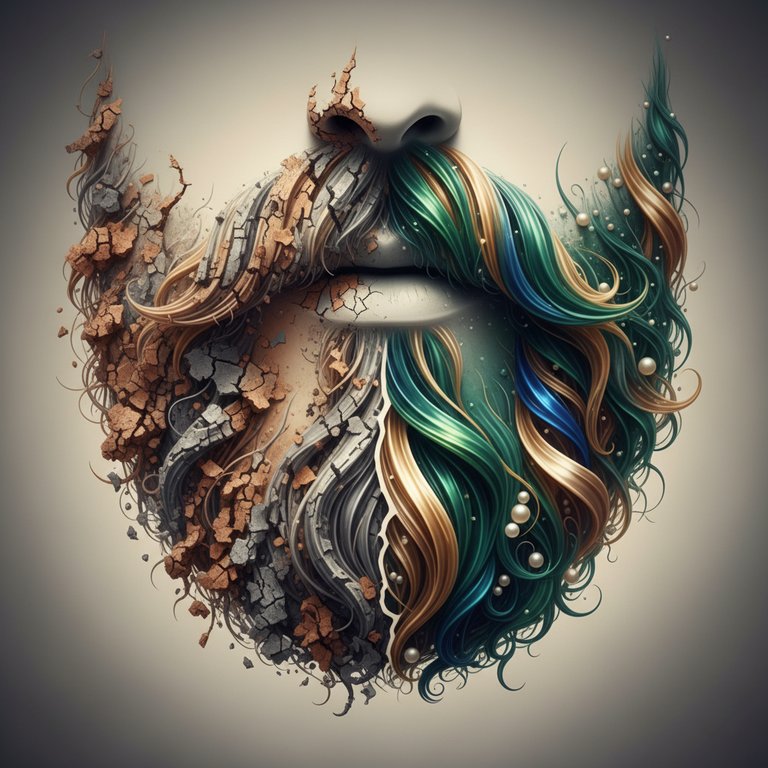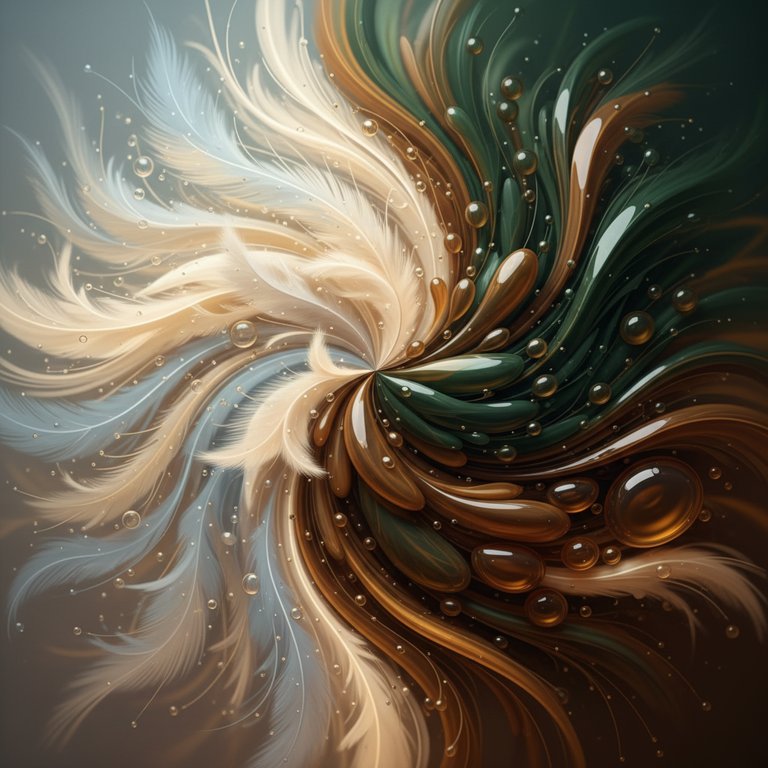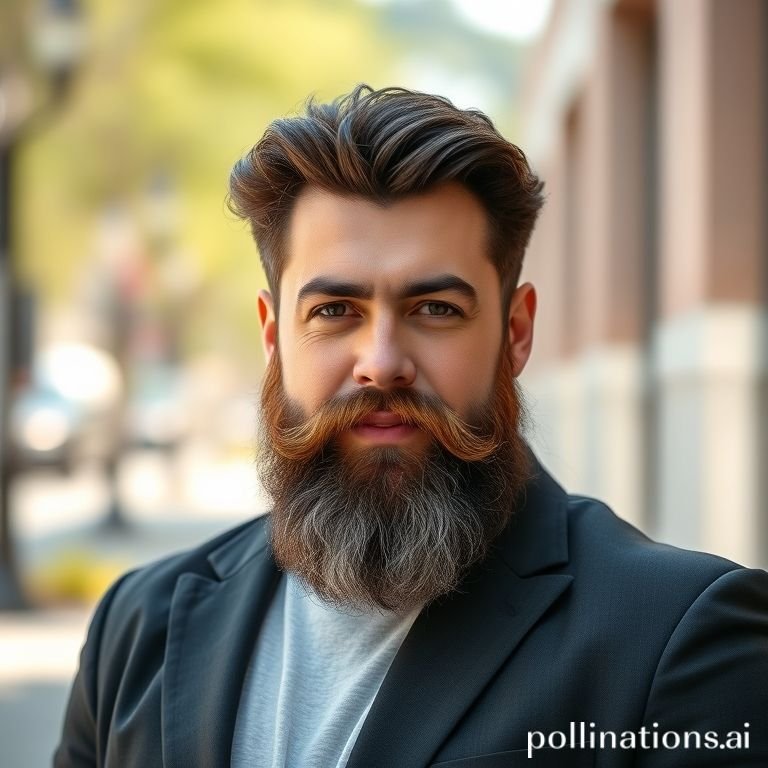Hey there, beard brothers and aspiring beardos! Let's talk about one of the most persistent myths in the world of facial hair: "Does shaving make your beard grow back thicker?" You've heard it, I've heard it, probably your grandpa told you it. It's a classic piece of beard lore that gets passed down through generations. But is there any truth to it? Or is it just another old wives' tale?
As someone who's spent years cultivating, trimming, and obsessing over my own facial fuzz, I can tell you this: the answer isn't quite what you might expect. Let's dive deep into the fascinating world of hair growth and uncover the real science behind why your beard *seems* different after a good shave.
The Age-Old Question: Does Shaving Really Make Your Beard Thicker?
Let's cut right to the chase, folks. The simple, scientific truth is: no, shaving does not make your beard grow back thicker, coarser, or darker. This might be a surprise to many, especially because it feels like it does! We've all been there – you shave off a patchy, wispy teenage beard, and a few weeks later, it seems to come back with a vengeance, looking stronger and more robust. But that's where the illusion comes in.
The Truth About Hair Growth and Follicles
Think of your hair like a tiny, individual plant. Each strand of hair grows from its own little pocket in your skin called a follicle. The follicle is where all the magic happens – it's where the hair is produced, and its characteristics (like thickness, color, and texture) are determined by your genetics and hormones, not by what you do to the hair shaft *after* it leaves the skin.
When you shave, you're merely cutting the hair strand at the surface of your skin. You're not affecting the follicle underneath, which is the engine of hair growth. It's like trimming the top of a bush; it doesn't change the roots or make the stems themselves thicker. The hair that grows back is the exact same hair your follicle was programmed to produce all along.
Why It *Seems* Thicker: The Visual Illusion
So, if shaving doesn't actually make it thicker, why does it feel that way? It's all about perception and a clever visual trick:
- Blunt Tips: When you shave, you cut the hair strand straight across, leaving a blunt, flat tip. Natural, unshaved hair tends to taper to a finer point. This blunt tip feels coarser and looks darker because it catches and reflects light differently. As the new hair grows out, these blunt tips give the impression of greater thickness and stiffness.
- Uniform Growth: When you shave everything off, all the hairs start growing back at roughly the same length. This uniform appearance makes the new growth look denser and more substantial than the varied lengths and thinner tips of an untrimmed, early-stage beard.
- Lack of Fading: Older, longer beard hairs often get exposed to sunlight, washing, and general wear and tear, which can cause them to lighten or fade slightly. Freshly grown hair hasn't been exposed to these elements yet, so it often appears darker and more vibrant, contributing to the illusion of thickness.
- Maturity: For younger guys especially, the first few times you shave, your beard might still be in its early, patchy stages. As you age, your hormones continue to develop, and your beard naturally becomes fuller and more mature. So, when you shave off a sparse beard at 18 and grow back a denser one at 20, it's not the shaving that caused the change, but rather your natural maturation process.
Understanding Your Beard's Natural Growth Cycle
To truly understand your beard, it's helpful to know a little about the hair growth cycle. Every single hair on your body goes through three main phases:
- Anagen (Growth Phase): This is the active growing period. For beard hair, this phase can last anywhere from 2 to 6 years, or even longer for some lucky folks. During this time, the hair follicle is actively producing hair. The longer your anagen phase, the longer your beard can grow.
- Catagen (Transition Phase): This is a short transitional stage, lasting only a few weeks. During catagen, hair growth stops, and the hair detaches from its blood supply.
- Telogen (Resting Phase): This is the resting phase, lasting a few months. The old hair rests while a new hair begins to grow beneath it. Eventually, the old hair sheds, and the cycle begins anew.
Shaving doesn't influence these phases or the hair follicle's ability to produce hair. It simply cuts the visible part of the hair during its anagen phase.
So, How Do You *Actually* Encourage a Thicker-Looking Beard?
While shaving won't magically make your beard thicker, there are definitely things you can do to help it look its best, feel healthier, and reach its full potential. It's all about patience, consistency, and proper care.
Step-by-Step Guide to a Fuller-Looking Beard:
- Commit to Growing: The first and most crucial step. You need to let your beard grow for at least 4-6 weeks without any significant trimming. This allows you to see its natural growth pattern and density. Resist the urge to trim during this initial phase!
- Keep it Clean: Wash your beard regularly (2-3 times a week is usually good for most guys) with a dedicated beard wash. This helps remove dirt, food particles, and dead skin cells that can hinder healthy growth.
- Condition and Hydrate: After washing, use a good beard conditioner to keep the hair soft and manageable. Follow up with beard oil daily to moisturize the hair and the skin underneath. Hydrated hair is less prone to breakage and looks healthier.
- Brush or Comb Regularly: Use a quality beard brush (boar bristle is excellent) or a wide-tooth beard comb. This helps to detangle, distribute natural oils, and train your beard to grow in the desired direction. Plus, it stimulates blood flow to the skin, which is beneficial for follicles.
- Trim Strategically (After Initial Growth): Once you have some length, you can start shaping your beard. A strategic trim can make a patchy beard look fuller by defining lines and removing stray hairs. Focus on the neckline and cheek lines for a neat appearance. Remember, less is often more when trimming.
Tips and Tricks for Optimal Beard Growth and Appearance
Beyond the basics, here are a few extra nuggets of wisdom to help your beard thrive:
- Patience is Key: Seriously, this is probably the biggest tip. Growing a great beard takes time. Don't get discouraged if it's not looking like a Viking's beard after a month. Stick with it!
- Balanced Lifestyle: A healthy body often leads to healthy hair. Eat a balanced diet rich in vitamins and minerals, stay hydrated, get enough sleep, and manage your stress. Your beard will thank you.
- Don't Over-Wash: While cleanliness is important, over-washing can strip your beard of its natural oils, leading to dryness and frizz. Find a routine that works for your beard type.
- Protect Your Beard: If you're out in harsh weather, consider using a beard balm to provide a protective layer. Balms also offer a bit of hold for styling.
- Avoid Harsh Chemicals: Stick to gentle, beard-specific grooming products. Shampoos and conditioners designed for the hair on your head can sometimes be too harsh for delicate facial hair.
Your Beard Growth FAQs Answered!
Let's tackle some of the burning questions I often hear from fellow beard enthusiasts:
Q: How to fix a patchy beard?
A: Patchiness is super common, especially in the early stages of growth or for younger guys. The best "fix" is often patience! Give your beard at least 2-3 months to grow out fully. As it gets longer, the longer hairs can often cover up sparser areas. Keep up with a good grooming routine – regular washing, conditioning, and beard oil application – to promote healthy growth in all areas. Brushing can also help train hairs to lay in a way that minimizes the appearance of patches. Remember, sometimes those "patches" are just part of your unique beard pattern!
Q: Why does my beard itch so much when I'm growing it out?
A: Ah, the dreaded beard itch! This is a rite of passage for almost every beard grower. It usually happens in the first few weeks as the new, coarse hairs start to curl and irritate the skin. Also, the skin underneath can get dry. The best way to combat itch is consistent hydration. Use a good quality beard oil daily, massaging it into the skin beneath your beard. This moisturizes the skin and softens the hairs, making them less irritating. Regular washing and conditioning also help remove dead skin cells and keep things clean and comfortable.
Q: How long does it take to grow a full beard?
A: This varies a lot from person to person, but generally, to grow what most would consider a "full" beard, you're looking at a commitment of 3 to 6 months. For a truly long, majestic beard, it could take a year or even longer! The first month or two will show you your basic growth pattern and density. Beyond that, it's all about letting the anagen (growth) phase do its thing. Patience is truly your best friend here.
Q: Can I trim my beard while growing it?
A: During the *initial* growth phase (the first 4-6 weeks), it's generally best to resist trimming altogether to let your beard establish its natural shape and length. After that, yes, strategic trimming can be beneficial! You can clean up your neckline and cheek lines to give your beard a neater, more intentional look, even if you're aiming for length. Some guys also do very light "dusting" trims on the ends to remove split ends and encourage healthier overall growth, but be very careful not to take off too much length if your goal is a long beard.
Q: Should I wash my beard every day?
A: For most guys, washing your beard every day with a beard wash is probably too much. Daily washing can strip your beard and the skin beneath of its natural, beneficial oils, leading to dryness, frizz, and even more itchiness. A good rule of thumb is to wash your beard 2-3 times a week with a dedicated beard wash. On the days you don't wash, you can still rinse it with water and apply beard oil to keep it hydrated and fresh.
Conclusion: Embrace the Natural You
So, there you have it! The idea that shaving makes your beard grow back thicker is a clever illusion, not a scientific fact. Your beard's thickness, color, and texture are largely predetermined by your genetics and hormones. What you *can* control is how healthy, well-groomed, and impressive your beard looks.
Instead of focusing on myths, focus on consistent care, quality grooming products, and a healthy lifestyle. Embrace the beard you have, nourish it, and watch it flourish. Remember, every beard journey is unique, and the best beard is a healthy, well-cared-for beard!
Disclaimer: This content is for informational purposes only and does not constitute professional advice. Always follow product instructions for grooming tools and products.



